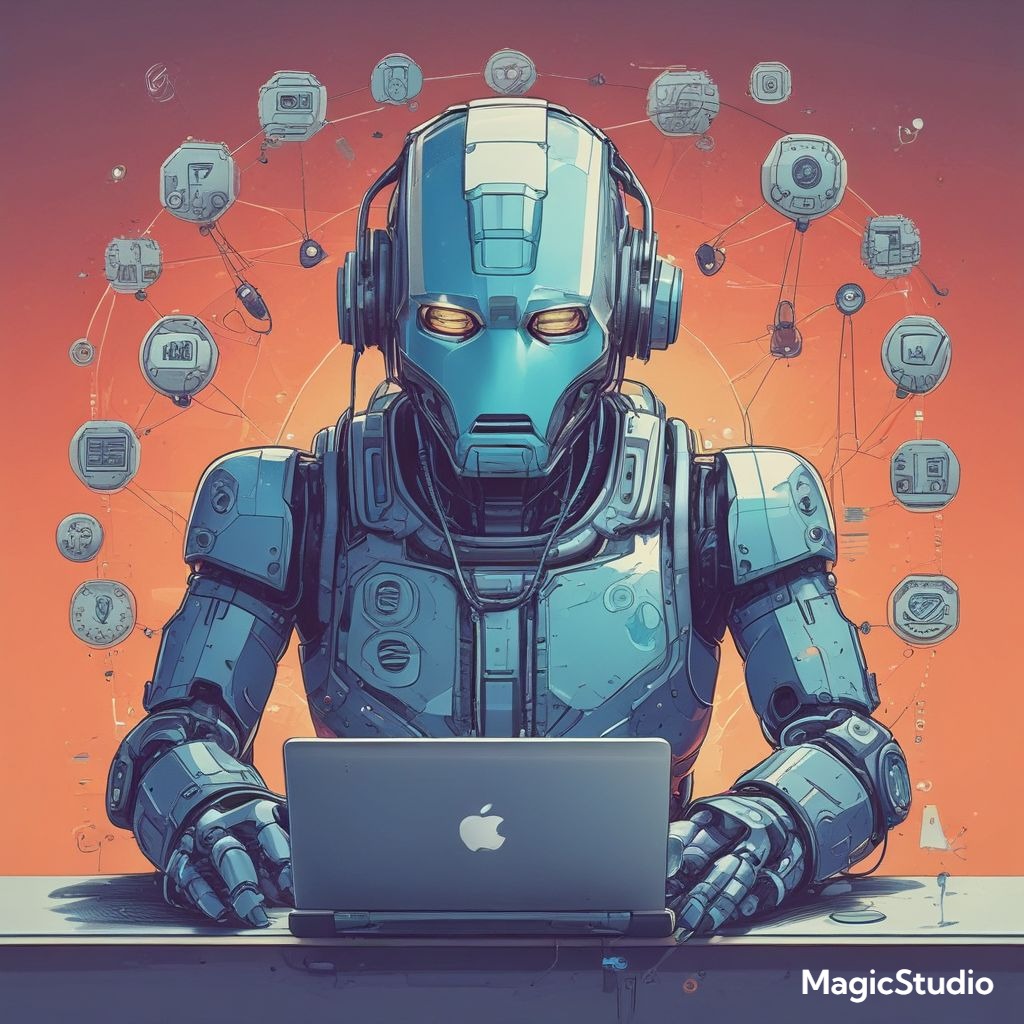Create Your Personal AI Assistant: Tools & Setup
Index
- Introduction
- Why You Should Create Your Own AI Assistant
- Understanding the Basics of AI
- What You Need Before Getting Started
- Step-by-Step Guide to Build Your Personal AI Assistant
- 5.1 Define the Purpose
- 5.2 Choose the Right Platform
- 5.3 Select AI Tools and Frameworks
- 5.4 Design the User Interaction
- 5.5 Integrate Voice or Text Interfaces
- Top Tools to Build a Personal AI Assistant
- How to Train Your AI Assistant with Your Data
- Making Your AI Sound Like You
- How to Use Your AI Assistant in Business
- How to Secure and Protect Your Personal AI
- Tips to Keep Improving Your AI Assistant
- Cost-Effective Options (Even Free Ones!)
- Real-Life Success Stories
- Future Trends in Personal AI Assistants
- Conclusion
- FAQs
Introduction
Ever wished you had your own AI assistant that worked just like you? Someone (or rather, something) that could write emails, schedule your meetings, respond to clients, or even offer business advice—all while sounding exactly like you? Well, that’s not a dream anymore. With recent advances in artificial intelligence, you can now create your personal AI assistant in just a few simple steps, even if you’re not a tech genius.
Let me walk you through everything you need to know, from tools and setup to building your AI assistant from scratch. We’ll keep things simple and easy to understand. If you’ve used ChatGPT, Siri, or Alexa, imagine having a similar assistant—but trained specifically on your voice, your style, and your goals.
Why You Should Create Your Own AI Assistant
Let’s start with a quick story. John, a small business owner, used to spend hours each week responding to emails, updating his website, and sending reminders to clients. Once he created a personal AI assistant, all of those tasks were automated—and guess what? His productivity shot up by 70%. More importantly, his assistant “sounded” like him, keeping that human connection with his clients.
Here are a few great reasons why creating your own AI assistant is a game-changer:
- Save time on repetitive tasks
- Stay consistent with communication
- Scale your operations without hiring more staff
- Offer 24/7 support to your customers or followers
- Personalize every interaction
Whether you’re an entrepreneur, a freelancer, or just someone who wants life to be easier, a personal AI assistant can help you get more done in less time.
Understanding the Basics of AI
Before we dive into how to build it, let’s break down what AI actually means in this context. Think of it as software that can “learn” from data, make decisions, and perform tasks that usually require human intelligence.
Here are a few core parts of an AI assistant:
- Natural Language Processing (NLP): This is how your assistant understands and talks like a human. Tools like OpenAI’s GPT make this possible.
- Machine Learning: Helps the AI improve over time by learning from new data and conversations.
- Voice Recognition: Converts your speech to text (think Siri or Google Assistant).
- Text-to-Speech (TTS): Makes your assistant speak back to you, just like a human.
Understanding these components isn’t just for tech geeks. When you know what powers your assistant, you can make smarter decisions about tools and upgrades later on.
What You Need Before Getting Started
Don’t worry—you don’t need to be a programmer. But there are a few things you’ll want to have ready:
- Clear Goal or Purpose
Do you want your AI to manage your calendar, reply to emails, or talk to customers on your website?
- Some Data (Optional but Helpful)
If you want your assistant to sound like you, collect some sample emails, texts, or recordings of your voice.
- Basic Tools
You’ll need access to some tools (most are free or low-cost):
- A computer with internet
- A no-code AI builder or platform like Voiceflow, Flowise, or Poe
- A text-to-speech tool if you want voice features (ElevenLabs is great for cloning your voice)
With these in place, you’re ready to move on to the next exciting part—building your assistant.
Step-by-Step Guide to Build Your Personal AI Assistant
Now let’s walk you through exactly how to create your personal AI assistant from scratch. Take your time with each step, and you’ll be surprised how quickly it comes together.
5.1 Define the Purpose
Ask yourself: What do I want my AI to do?
Here are a few examples:
- Respond to FAQs from your customers
- Write blog posts or emails in your style
- Act as your personal chatbot
- Answer queries on your social media
Make a list of tasks and prioritize them. Knowing what you want helps guide your tool selection and setup.
5.2 Choose the Right Platform
You don’t need to code your assistant from zero. There are amazing platforms out there that make it super easy:
- FlowiseAI: No-code visual editor powered by LangChain and OpenAI. Great for custom logic.
- Voiceflow: Perfect for voice and chatbot creation.
- Botpress: Best for those who want enterprise-level chatbots.
- ChatGPT Custom GPTs: Great for personal use; lets you customize a GPT with your own style.
Pick the platform that suits your goal. For instance, if you just want a chatbot on your site, try Tidio or Landbot. If you want something more advanced, go with Flowise or OpenAI API.
5.3 Select AI Tools and Frameworks
Your platform is the base, but now you need tools for specific features:
- Natural Language Understanding: OpenAI GPT-4
- Voice Cloning: ElevenLabs
- Text-to-Speech: PlayHT
- Speech Recognition: Whisper by OpenAI
Each tool serves a purpose. Combine them to create a full-featured AI assistant that talks, listens, and thinks like you.
5.4 Design the User Interaction
Now, decide how your assistant will interact. Will users type messages, click buttons, or speak?
Tips:
- For typing/chat, use a clean, intuitive interface (chatbot-style).
- For voice, keep your responses short and natural.
- Build conversational flows—like a tree of questions and answers.
Example: If someone says “Book a meeting,” the assistant could reply, “Sure! What day and time work best for you?”
You can build these flows using Voiceflow, Flowise, or even Notion AI for basic setups.
5.5 Integrate Voice or Text Interfaces
Want your assistant to talk like you? Here’s how:
- Record 5–10 minutes of your voice reading a script
- Upload it to ElevenLabs
- Clone your voice and integrate it with your assistant using APIs
Now you have a talking assistant that actually sounds like you. You can even connect it to your phone or smart speaker with tools like Zapier and IFTTT.
Top Tools to Build a Personal AI Assistant
Choosing the right tools can make or break your personal AI assistant. Thankfully, today’s ecosystem is packed with powerful, easy-to-use tools that even non-coders can master. Let’s break down some of the best ones and what they’re good for:
This is the brain of your assistant. It powers intelligent text responses, writing, and natural conversation. With ChatGPT’s custom GPTs, you can even train it with your own data or instructions.
If you want to create voice-based AI like Alexa or Google Assistant, Voiceflow is your go-to. It’s drag-and-drop, no code, and super intuitive.
Want your AI to talk in your voice? ElevenLabs uses advanced voice cloning technology. You only need a short audio sample to create a lifelike digital version of your voice.
Think of Flowise as a no-code way to chain AI logic visually. It’s perfect for more advanced tasks and automation—great for developers and creators who want flexibility without diving into raw code.
These tools connect your AI to other apps. Want your assistant to post on Slack, email someone, or schedule on Google Calendar? Zapier makes it automatic.
- Notion AI
Ideal for managing documents and tasks. Notion AI is great for people who want their assistant to help with content, summaries, and notes—all inside their workspace.
A great tool for creating smart chatbots. If you’re building something for your website or customer service, this one’s worth exploring.
No matter your use case, these tools can form the backbone of your personal AI. Try mixing and matching them depending on what you want your assistant to do.
How to Train Your AI Assistant with Your Data
So, you’ve picked your tools—now it’s time to make your assistant yours. That means training it on your content so it can talk like you and understand your world.
Here’s how to get started:
- Gather Your Data
- Emails you’ve written
- Blog posts or social media captions
- Voice notes or audio messages
- Your FAQs or support chats
- Organize It
Put everything in one folder or a Google Drive. You want it easy to find and categorize.
- Feed It to Your AI
If you’re using OpenAI custom GPTs, you can upload documents directly. Platforms like Flowise or Botpress also let you connect to external data sources like:
- Google Sheets
- Notion pages
- Knowledge bases
Your assistant will now pull responses from your actual data. That means it won’t just be smart—it will be you-level smart.
Pro Tip:
Use semantic search tools (like Pinecone or Weaviate) to help your AI understand context better. This way, it won’t just match keywords but will truly comprehend what’s being asked.
Making Your AI Sound Like You
Here’s where it gets spooky cool. With a little effort, your assistant can not only think like you—but also sound like you.
Steps to Clone Your Voice:
- Write a script (e.g., “Hi, I’m [Your Name], and this is my AI assistant…”)
- Record 5–10 minutes of your voice reading it
- Upload it to ElevenLabs
- Let it process and generate your digital voice
- Connect it to your assistant via APIs (Voiceflow or custom app)
Now, every time your AI responds via voice, it will be like you’re talking. That’s powerful for:
- Client calls
- Podcasts
- Training videos
- Website intros
A client once told me, “I had no idea that was your AI assistant—I thought it was you on a call!” That’s how lifelike it can be.
How to Use Your AI Assistant in Business
Let’s get practical. Now that your assistant is live, what can it do for your business?
Use Cases:
- Customer Support: Answer queries 24/7, instantly and accurately.
- Sales Assistant: Qualify leads, recommend products, and guide users to checkout.
- Content Writer: Generate blogs, captions, and emails in your tone.
- Admin Helper: Book meetings, send reminders, and manage tasks.
Example Workflow:
Customer sends a message → AI assistant replies with product info → Captures email → Adds to CRM → Books meeting
All without you lifting a finger.
Bonus:
Use your assistant on your website, social media, or even as a WhatsApp bot. Platforms like Twilio and Botpress make it easy to go multichannel.
How to Secure and Protect Your Personal AI
Security is a big deal—especially when your AI has access to sensitive data. Here’s how to keep things locked down:
- Use Secure APIs
Only use trusted platforms with good security ratings. Always use HTTPS and verify API keys.
- Enable Authentication
Add password protection or OAuth login to control who uses your assistant.
- Encrypt Sensitive Data
Never store passwords or customer data in plain text. Use tools like Vault by HashiCorp for secure secrets management.
- Monitor Logs
Regularly check usage logs to see how your assistant is being used. If anything looks off, investigate immediately.
- Limit Permissions
Only give access to what’s absolutely necessary. If your AI doesn’t need to access email, don’t let it.
This step might not be exciting—but it’s critical. A secure AI is a trustworthy AI.
Tips to Keep Improving Your AI Assistant
Creating your personal AI assistant isn’t a one-time job—it’s a continuous process. Just like a new employee, your assistant will get better the more you train and update it. Here are some pro tips to keep it sharp and useful:
- Regularly Update Its Knowledge
Set a reminder to upload new content every week or month. That could be:
- New product updates
- FAQs from customers
- Emails and blog posts you’ve written
- Customer service scripts
- Monitor Conversations
Use tools like Chatbase or your platform’s built-in analytics to track:
- How people interact with your AI
- Where it fails or gives poor responses
- What new topics users are asking about
This will give you valuable feedback to improve its performance.
- Refine Its Tone
If your assistant ever sounds robotic or off-brand, go back and tweak the prompts or data. For example, add “respond in a friendly, casual tone” to the prompt or fine-tune with more examples of your voice or writing.
- Test Often
Pretend to be a customer. Ask random questions. See how your assistant handles them. This hands-on testing will show you real-life issues that don’t show up in a test environment.
- Stay Updated with AI News
Subscribe to newsletters like The Rundown AI or Ben’s Bites to stay ahead of AI trends, updates, and tools that can level up your assistant.
By consistently refining your assistant, it will grow smarter, faster, and more valuable to your daily life and business.
Cost-Effective Options (Even Free Ones!)
Think building your own AI assistant costs thousands? Not anymore. Many top tools now offer free plans or super affordable tiers for creators and small businesses.
Here’s a breakdown of some popular options:
Tool | Free Plan Available? | Use Case | Paid Tier Starts At |
ChatGPT Custom GPTs | ✅ | Text-based assistant | $20/month (ChatGPT Plus) |
Voiceflow | ✅ | Voice & chat design | $0 – paid plans start at $40/month |
Flowise | ✅ (self-hosted) | Visual AI logic | Free (requires setup) |
ElevenLabs | ✅ | Voice cloning | $5/month basic tier |
Zapier | ✅ | Automation | $20/month |
Notion AI | ❌ (trial only) | Document + task AI | $10/month |
Poe by Quora | ✅ | AI bots from multiple models | Free – pro at $20/month |
Even with minimal investment, you can build a powerful assistant. Pro tip: Mix free versions of tools like ChatGPT and Zapier to keep things budget-friendly.
Real-Life Success Stories
Let’s look at how others are using personal AI assistants to transform their lives.
Case Study 1: Sarah, the Solopreneur
Sarah runs a skincare business. She built a chatbot using Flowise and trained it with her blog content and product guides. Now, her AI handles:
- Customer support
- Product suggestions
- Order tracking
She reduced email inquiries by 80% and increased customer retention by 25%.
Case Study 2: Mike, the Content Creator
Mike cloned his voice with ElevenLabs and trained a Custom GPT to respond to his followers. His AI now:
- Sends personalized replies on social media
- Records video intros using his voice
- Writes newsletters in his tone
He now has more time to focus on creativity, and his audience loves the “personal” touch.
Case Study 3: Corporate Use
Even mid-sized companies are jumping in. A financial firm created an internal AI using OpenAI + Notion AI to answer employee FAQs, saving 200+ hours a month in HR queries.
The bottom line? This isn’t just a tech trend—it’s a real-world solution that can scale with you.
Future Trends in Personal AI Assistants
AI is moving fast—really fast. If you’re building an assistant today, you’ll want to know what’s coming next so you can plan ahead.
Emerging Trends:
- Multi-modal AI: Tools that can see, hear, and understand both text and images (like OpenAI’s GPT-4 with vision).
- Autonomous Agents: Your AI can now do things like browse the web, write code, and send emails by itself using tools like AutoGPT and AgentGPT.
- Emotional Intelligence: New models are learning to detect tone, mood, and emotion—making conversations more natural and empathetic.
- Wearable Integration: Your assistant might soon live inside smart glasses, watches, or even brain chips (hello, Neuralink).
- Hyper-Personalization: Imagine your AI assistant not just talking like you, but also thinking like you, knowing your routines, and anticipating your needs.
The future is all about AI as a companion—not just a tool. By starting now, you’re not just building an assistant—you’re building the future.
Conclusion
Creating your personal AI assistant may seem futuristic, but with today’s tools and platforms, it’s easier than ever—and incredibly powerful. Whether you’re a busy entrepreneur, a content creator, or just someone who values time and efficiency, your own AI can change how you work, connect, and live.
Start small. Pick your platform. Train your AI with your data. Then watch as your assistant evolves into an extension of you—one that never sleeps, always works, and always represents you perfectly.
FAQs
- How long does it take to create a personal AI assistant?
It depends on complexity. A basic chatbot takes minutes with platforms like Poe or ChatGPT. A voice-enabled assistant might take a few days to set up and train properly. - Can I make my AI assistant free of cost?
Yes! Many platforms offer generous free plans. You can mix free tools (like Flowise and ChatGPT) to build a powerful assistant without spending a dime. - Will my assistant keep getting better over time?
Absolutely. As you feed it more data and monitor its responses, it’ll become smarter, more accurate, and more personalized. - Is it safe to use AI for business tasks?
Yes, as long as you use secure platforms and best practices (like encryption and user authentication). Always review sensitive tasks manually if security is a concern.



